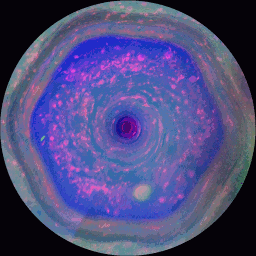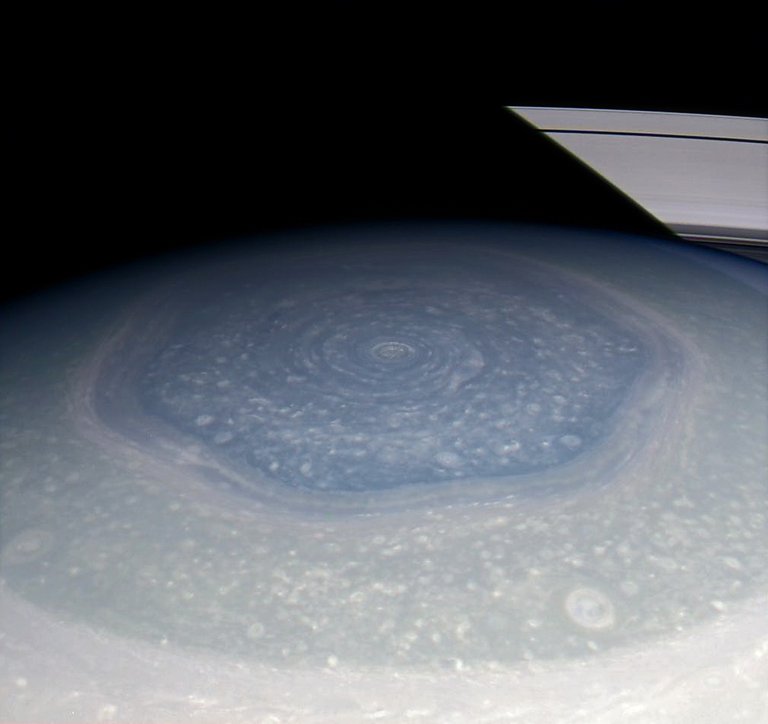
After flybys from NASA's Voyager and Cassini spacecraft between 1980 - 1988, scientists scrambled to review and explain the data and pictures they received showing a bizarre, hexagon shaped cloud pattern at Saturn's north pole. Until just recently, they could not come up with an explanation.

Credit: http://nssdc.gsfc.nasa.gov
Nothing like this has ever been seen before...
The hexagon, which contains a violent storm at its center, is just about 20,000 miles wide and 60 miles tall, reaching down into Saturn's atmosphere.

Credit: NASA / JPL / SSI / Hampton University
For years, scientists hypothesized a number of theories about its existence. One theory compared it to a giant bucket filled with water swirling inside, thus generating whirlpools which possessed holes showing odd, geometric shapes. This example was more of an allegory to explain how the cloud formation might retain its shape and function; not how it came about.
On their journeys, both spacecraft, Voyager and Cassini, identified many of the hexagon's features that could later help explain how it formed. Some data suggests the points of the hexagon rotate around its center at almost the same rate the planet rotates on its axis. Additionally, a jet stream air current flows eastward at up to 220 mph, along the hexagon's outline.

Credit: NASA/JPL-Caltech/Space Science Institute
Have computer models finally solved this mystery?
In a 2015 interview with Space.com, New Mexico Institute of Mining and Technology Scientist Raúl Morales-Juberías said they now have a "very simple model" which is able to "match many of the observed properties of the hexagon."
Computer simulations were ran using an eastward jet flowing in a curving path near Saturn's north pole. At six points, small re-directions of the jet eventually created a hexagonal shape. The simulated hexagon rotated around its center at speeds similar to the one found on the giant gas planet.
Numerous different models, in addition to Morales-Juberías' findings, were later included in the scientific Astrophysical Journal Letters publication.
View more pictures and animations of Saturn's strange hexagon below:

Credit: http://nssdc.gsfc.nasa.gov

Credit: NASA/JPL-Caltech/Space Science Institute


Top two gif credits: http://pinterest.com
Main image: NASA / JPL / Space Science Institute
Hi, I found some acronyms/abbreviations in this post. This is how they expand:
Hi! I am a robot. I just upvoted you! I found similar content that readers might be interested in:
https://latenighthour.com/